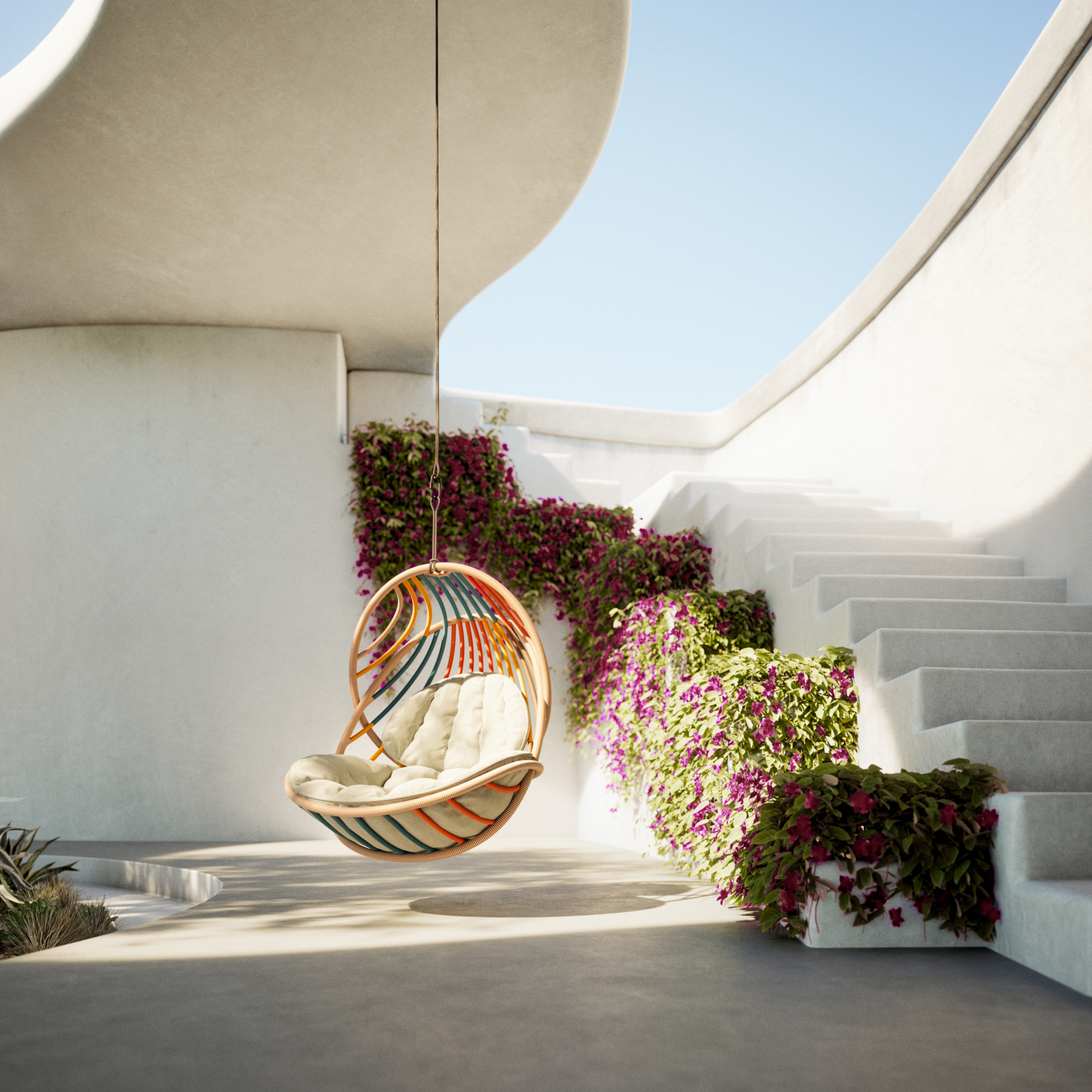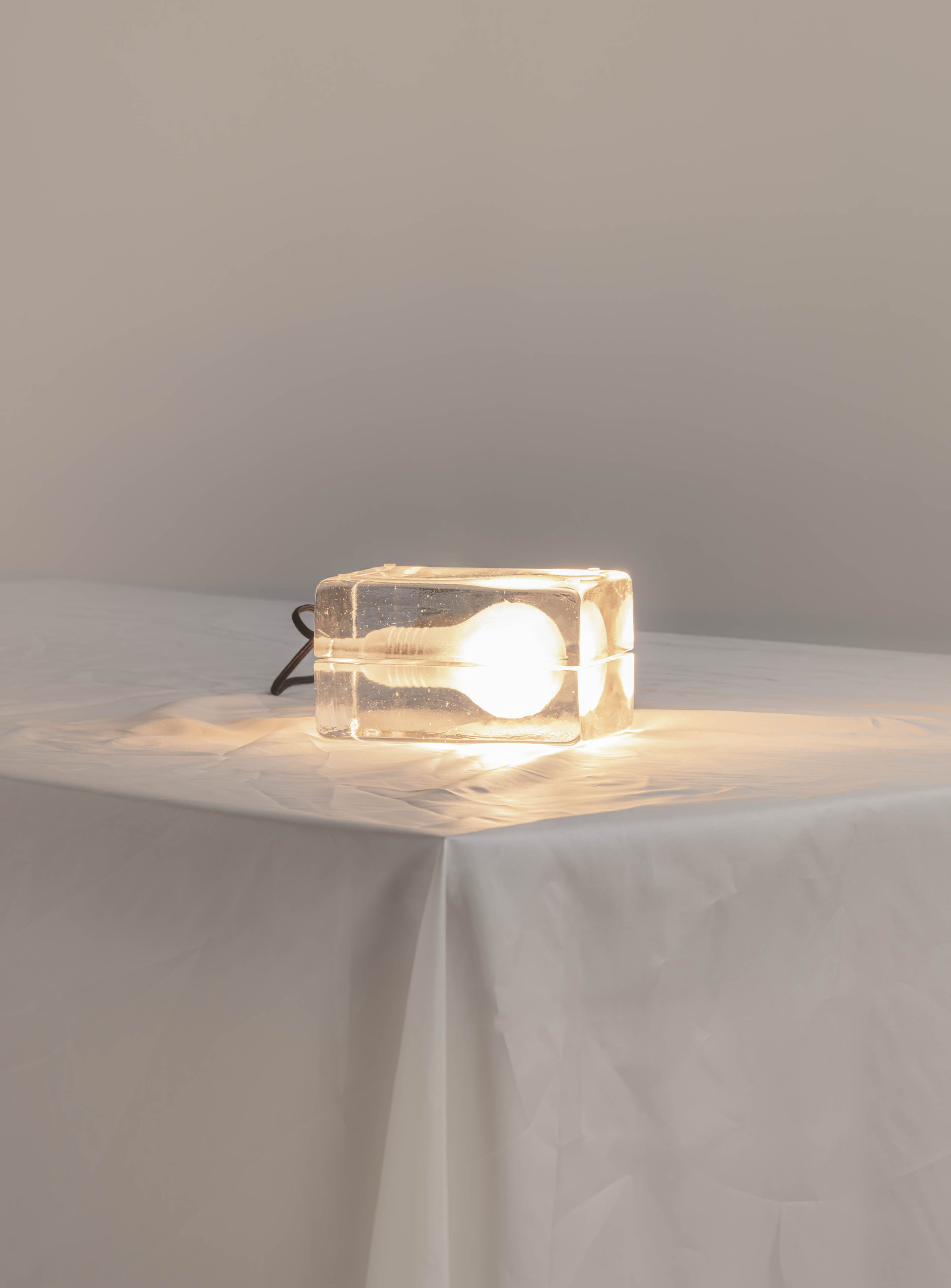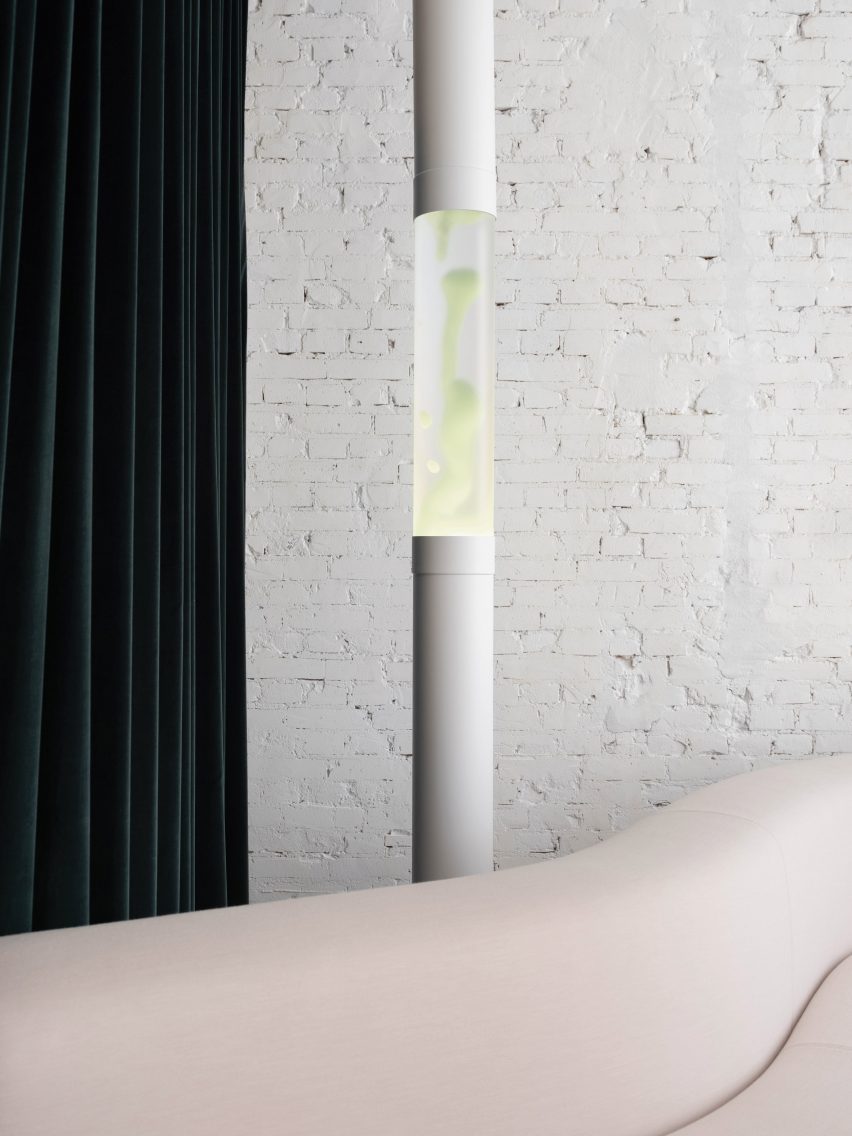The German company DEDON is renowned for its outdoor furniture and partnership with master weavers on the Philippine Island of Cebu. When designer Stephen Burks pitched the idea for a wrapped hanging chair, he was eager to travel to the island to incorporate their artisan techniques into his design. This exploration led to the development of the KIDA hanging chair, combining Cebu’s traditional talents with modern design.
The hanging chair was met with positive reception following its debut, with customers praising its organic shape and unique multicolor palette.
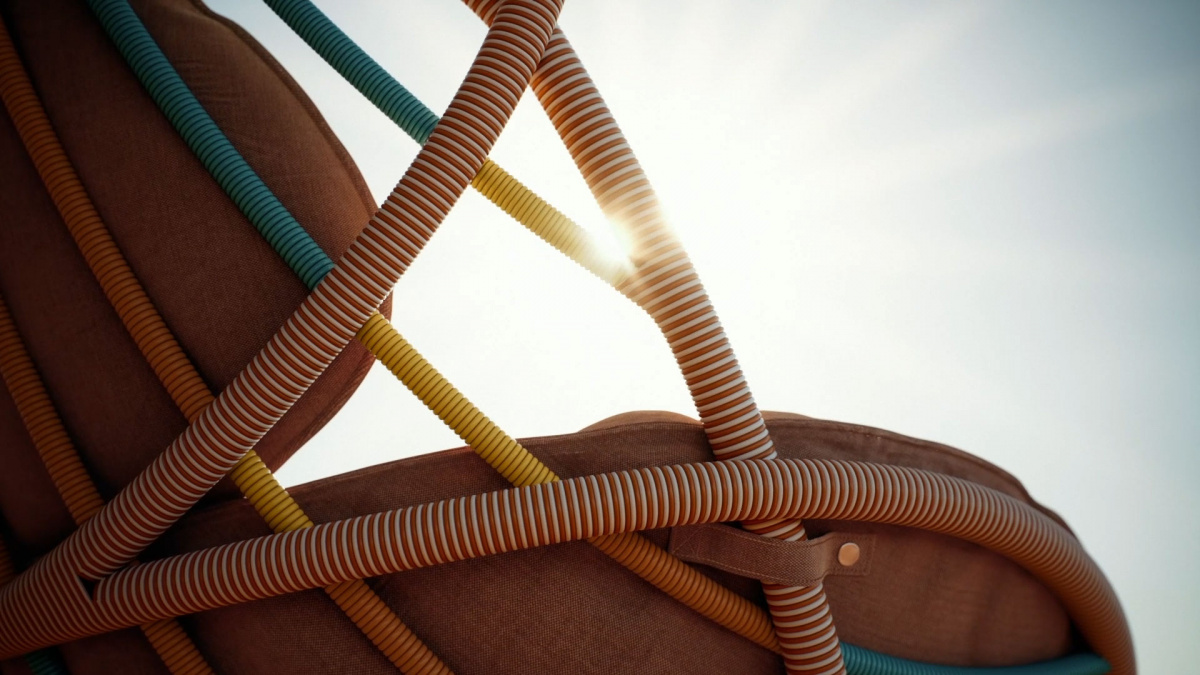
Staying true to the original chair’s multicolored fibers, the team hoped the palette would transfer smoothly to the lounge chair. Photo courtesy DEDON
Few have successfully achieved the open weave concept to the level of DEDON and Stephen. The chair’s fiber is wrapped around a sturdy aluminum frame as opposed to organic elements like rattan or outdoor rope. Its cradle-like structure envelops the user in a plush cushion while light and air flow through its gentle curves. The effect, as Stephen says, is to feel “as free as the breeze.”
Stephen designed the KIDA hanging chair in a way that would allow it to evolve beyond its original iteration. The lineup now includes an armchair, footstool, and most recently, a lounge chair. This visionary mindset doesn’t surprise Julia Shapovalova, creative director at DEDON. She says Stephen often envisions the future of multiple collections at once. When it came to the new KIDA lounge chair, he didn’t just present a concept—he was immersed in every detail.
“He came up with an amazing design that we didn’t know how to implement right away,” Julia says. “He was always five steps ahead. Sometimes he’s too fast—the world isn’t ready for the ideas he comes up with. Working with him has been a source of inspiration. He’s always ready for our experiments, and he always says ‘yes.’”
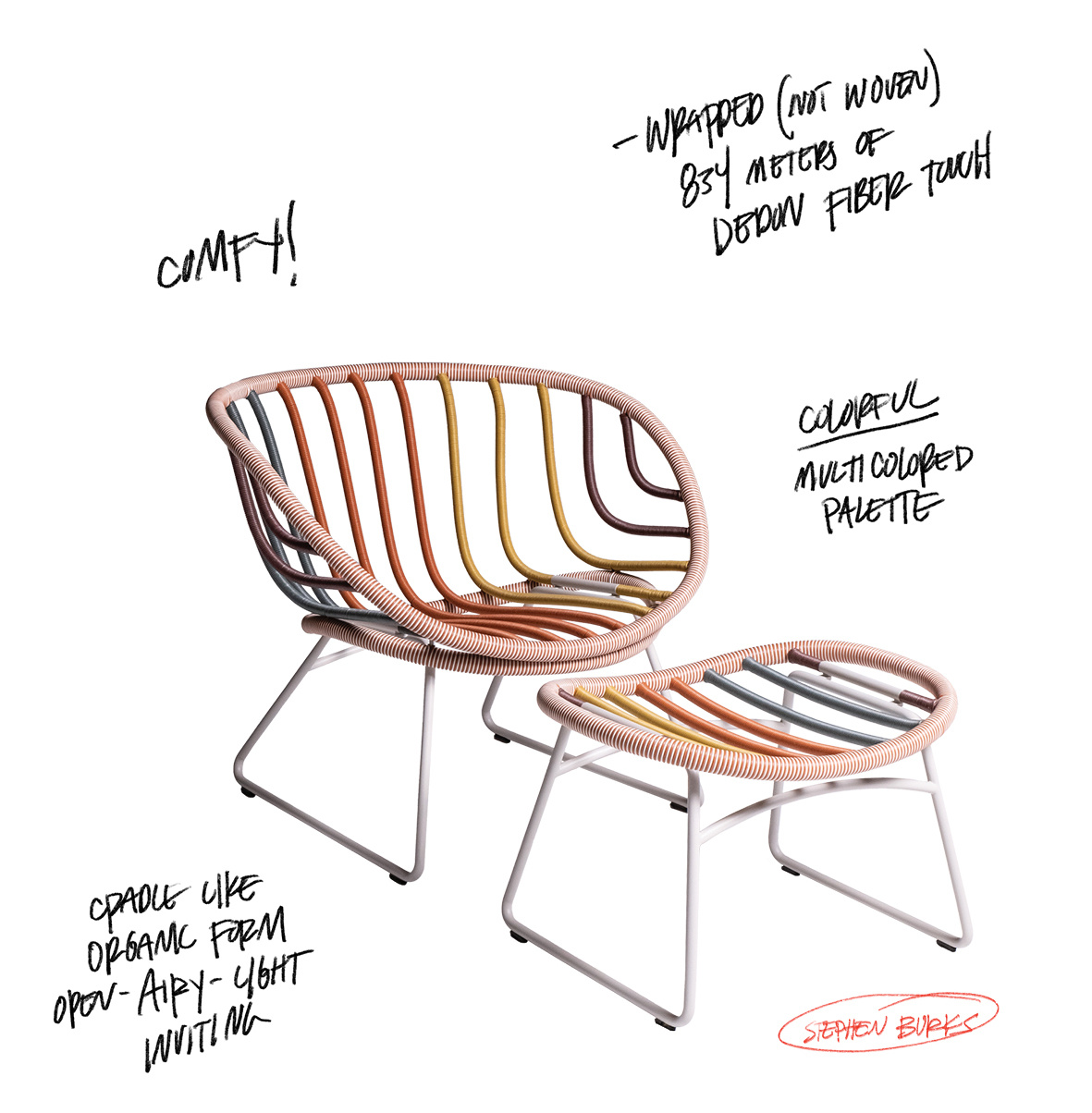
Few have successfully achieved the open-weave concept to the level of DEDON and Stephen. The chair’s fiber is wrapped around a sturdy aluminum frame as opposed to organic elements like rattan or outdoor rope. Photo courtesy DEDON, illustration by Chris Force
Much like its predecessors, crafting the KIDA lounge chair was a meticulous process unfolding over several years. New weaving techniques and specialized fibers were also developed, resulting in more than 10 prototypes.
“I’m sure people were wondering why it took so long to create,” Julia says. “We went through many ideas and tests. Each prototype looked completely different, especially in terms of typology. If you lined them up next to each other you’d immediately see the difference. It was a long process.”
Staying true to the original chair’s multicolored fibers, the team hoped the palette would transfer smoothly to the lounge chair. While its aesthetic versatility made the lounge suitable for various uses, there was concern around where consumers would place it.
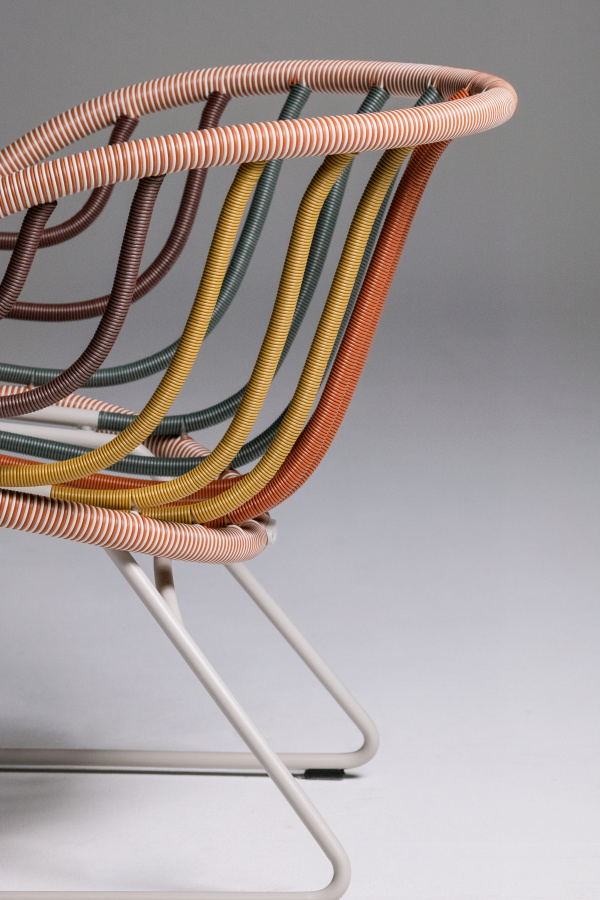
Much like its predecessors, crafting the KIDA lounge chair was a meticulous process unfolding over several years. New weaving techniques and specialized fibers were also developed, resulting in more than 10 prototypes. Photo courtesy DEDON
“Inside the home furniture can act as an accent piece,” Julia says. “The entire world is yours. Outdoor has a different standard because it’s much more functionality focused. Everyone was saying, ‘Oh my god, it’s so colorful. We don’t need this kind of colorful chair. Our end consumer and dealers will never accept it.’”
Once the chair was unveiled at the furniture fair Salone del Mobile, however, the market fell in love. “People embraced the KIDA right away,” Julia says. “They were in the booth saying, ‘Wow, this is such a colorful chair, and I know exactly where I’m going to place it. It’s the best success story.”
Following the Bauhaus tradition, Stephen sought design universality with the KIDA lineup—a democratic approach catering to a range of situations and people. The excitement surrounding the lounge chair is a testament. Shortly after the fair, the original hanging chair was showcased in an exhibit highlighting innovative designs worldwide at Switzerland’s Vitra Design Museum.
“The KIDA hanging chair swung onto the scene at a time when more people were looking for exciting ways to be outside,” Stephen says. “I believe it plays a meaningful role for people in expressing this lifestyle choice.”
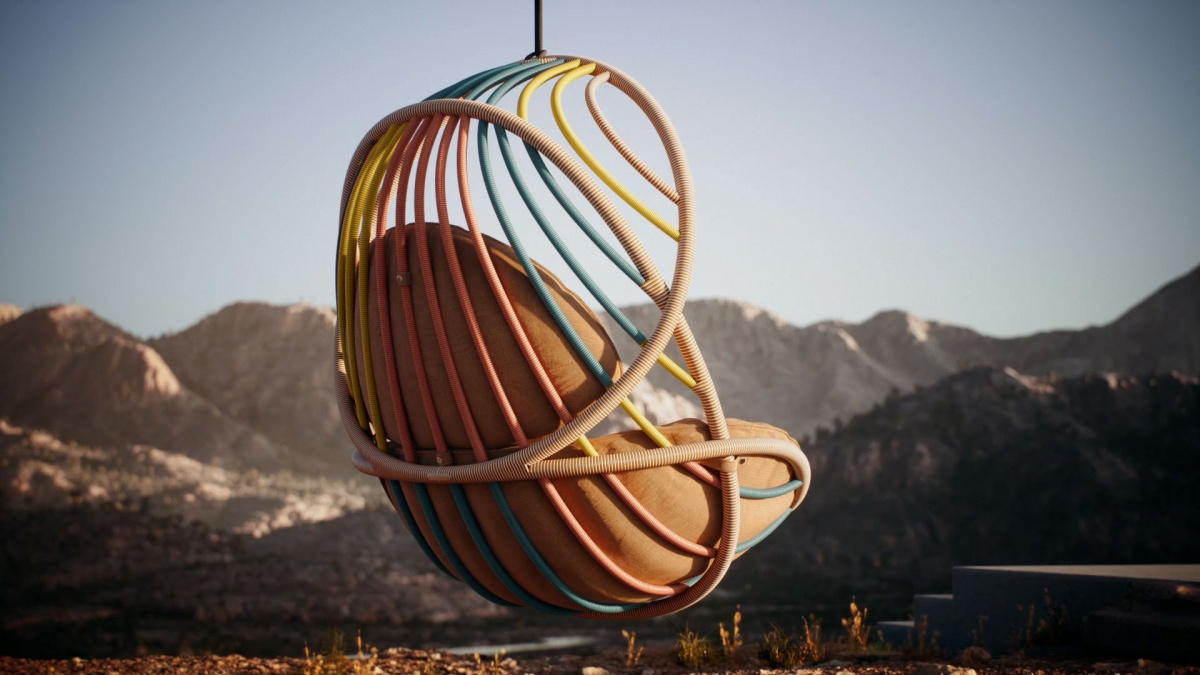
“If people think of KIDA when they think of being outdoors or imagine a swing, then we’ve done our job,” says Stephen. Photo courtesy DEDON
With its potential for various color combinations and Stephen as its creative lead, the KIDA line is likely to continue to evolve well into the future. “We have lots of exciting directions we could go in,” Julia says. “Sometimes we postpone ideas that are too ‘out there’ for the current market. Funny enough, some meetings center around which product we’ll postpone for next year. We have many amazing proposals and ideas. It’s time to launch something even crazier.”
While predicting a product’s path to icon status is often impossible, Julia encourages brands to be daring and “try something wild,” to stand out from the crowd.
“I suppose an icon defines the zeitgeist and is what you imagine when you think of that lifestyle, space, or typology,” Stephen says. “If people think of KIDA when they think of being outdoors or imagine a swing, then we’ve done our job.”
A version of this article originally appeared in Sixtysix Issue 12. Subscribe today
